Whither the Bookstore?
 Following up on John’s post (and subsequent discussion) concerning the predicament of Barnes and Noble, which seems to be getting a taste of its own medicine as e-books and online book buying may relegate the superstore concept as nostalgic as the local independent book dealer, is this article from The New York Times. What’s interesting is the prediction that despite the growing acceptance of reading on handheld screens and website ordering, surviving independent stores may still flourish because of their personalized service to niche customers.
Following up on John’s post (and subsequent discussion) concerning the predicament of Barnes and Noble, which seems to be getting a taste of its own medicine as e-books and online book buying may relegate the superstore concept as nostalgic as the local independent book dealer, is this article from The New York Times. What’s interesting is the prediction that despite the growing acceptance of reading on handheld screens and website ordering, surviving independent stores may still flourish because of their personalized service to niche customers.
 Makes sense. Every time I go into an independent bookstore, I feel compelled to buy something even if I already have to many books I haven’t read yet, much less that I could get the book cheaper online (or even at Barnes and Noble). One reason I like to support these guys is that there’s something very attractive about “non-chain store” shopping, where owners have put their own individual stamp on the presentation and perusal of their wares.
Makes sense. Every time I go into an independent bookstore, I feel compelled to buy something even if I already have to many books I haven’t read yet, much less that I could get the book cheaper online (or even at Barnes and Noble). One reason I like to support these guys is that there’s something very attractive about “non-chain store” shopping, where owners have put their own individual stamp on the presentation and perusal of their wares.
True, they may not be as deep stocked as B&N (or at least used to be). But, funny how the books they do carry in the fiction section are almost exactly the kinds of things I’m interested in.
To give B&N its due, though, I always thought it conveyed more a sense of a traditional bookshop than its much more troubled competitor, Borders. (Gone into one lately? It’s like Waldenbooks on steroids, meaning appealing to the lowest common denominator is even more depressing when it’s bloated with stationary and puzzles). And the people who worked there do seem to be knowledgeable and enthusiastic about books, unlike some of the clueless clerks you might find in a mall record store (do they still have those?).
As for what will happen to the physical book once we’re all reading on our Kindles or iPads or inner eyelid digital display inlays, check out this article by Rob Walker, also from theTimes. I particularly like the idea of using an old discarded book to house your Kindle. And that someone could actually sell it for $25.
See, all those books bending your bookshelves do have some future value. Get ’em while you can.
 “Beyond the Sunrise” is the unofficial title afforded an unfinished Kull story that did not see print until over forty years after the author’s death. Its significance is due largely to the fact that it was the first of four widely differing attempts to continue the Kull series following the publication of both “The Shadow Kingdom” and “The Mirrors of Tuzun Thune” in Weird Tales in 1929.
“Beyond the Sunrise” is the unofficial title afforded an unfinished Kull story that did not see print until over forty years after the author’s death. Its significance is due largely to the fact that it was the first of four widely differing attempts to continue the Kull series following the publication of both “The Shadow Kingdom” and “The Mirrors of Tuzun Thune” in Weird Tales in 1929. Because this series about riding about the dragon called Publishing is geared at writers just starting out writing fantasy stories and novels, I thought I’d pull together
Because this series about riding about the dragon called Publishing is geared at writers just starting out writing fantasy stories and novels, I thought I’d pull together 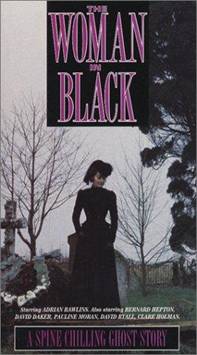 Anyone who has been reading these entries with any regularity knows that the word “minimalist” will never be used in the same sentence with my name. I seem to be visually starved, needing to be perpetually surrounded by interesting if not strange things to look at. This can easily be proven by the fact I cohabitate with a voodoo doll collection and three German Shepherds.
Anyone who has been reading these entries with any regularity knows that the word “minimalist” will never be used in the same sentence with my name. I seem to be visually starved, needing to be perpetually surrounded by interesting if not strange things to look at. This can easily be proven by the fact I cohabitate with a voodoo doll collection and three German Shepherds.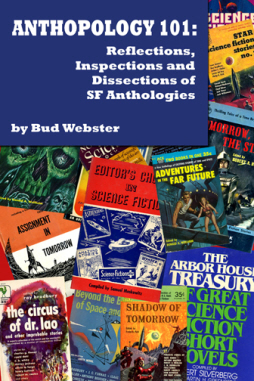 SF author Bud Webster informs us that his book Anthopology 101: Reflections, Inspections and Dissections of SF Anthologies, is now available from The Merry Blacksmith Press. Bud tells us:
SF author Bud Webster informs us that his book Anthopology 101: Reflections, Inspections and Dissections of SF Anthologies, is now available from The Merry Blacksmith Press. Bud tells us: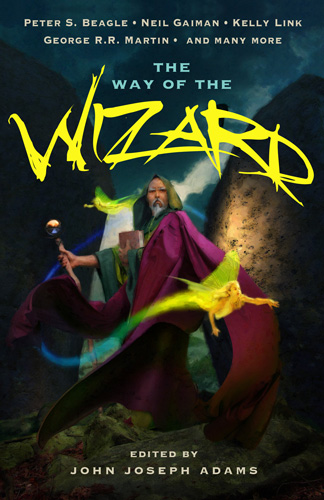
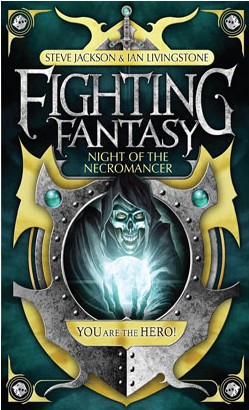 Night of the Necromancer
Night of the Necromancer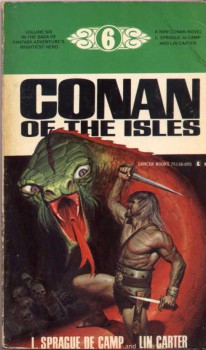
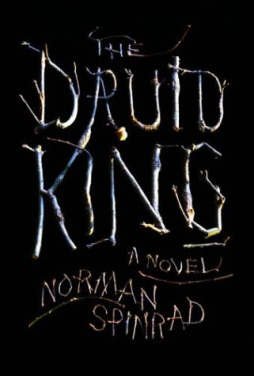 In Part Two of his blog series on the Publishing Death Spiral (read Part One
In Part Two of his blog series on the Publishing Death Spiral (read Part One 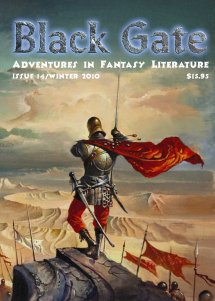 Sixteen of your US dollars. That’s what the latest (monster) issue of Black Gate has cost you in these days of fear and crumbling factories. It’s strange, isn’t it? You’ll spend all that money on a collection of fiction and game reviews when the internet is bursting with so much free content. If you go looking right now, you can find a million Sword & Sorcery stories out there that you wouldn’t even need to pirate: the authors, overcome in a delirium of generosity, are only too thrilled to supply them for free.
Sixteen of your US dollars. That’s what the latest (monster) issue of Black Gate has cost you in these days of fear and crumbling factories. It’s strange, isn’t it? You’ll spend all that money on a collection of fiction and game reviews when the internet is bursting with so much free content. If you go looking right now, you can find a million Sword & Sorcery stories out there that you wouldn’t even need to pirate: the authors, overcome in a delirium of generosity, are only too thrilled to supply them for free.